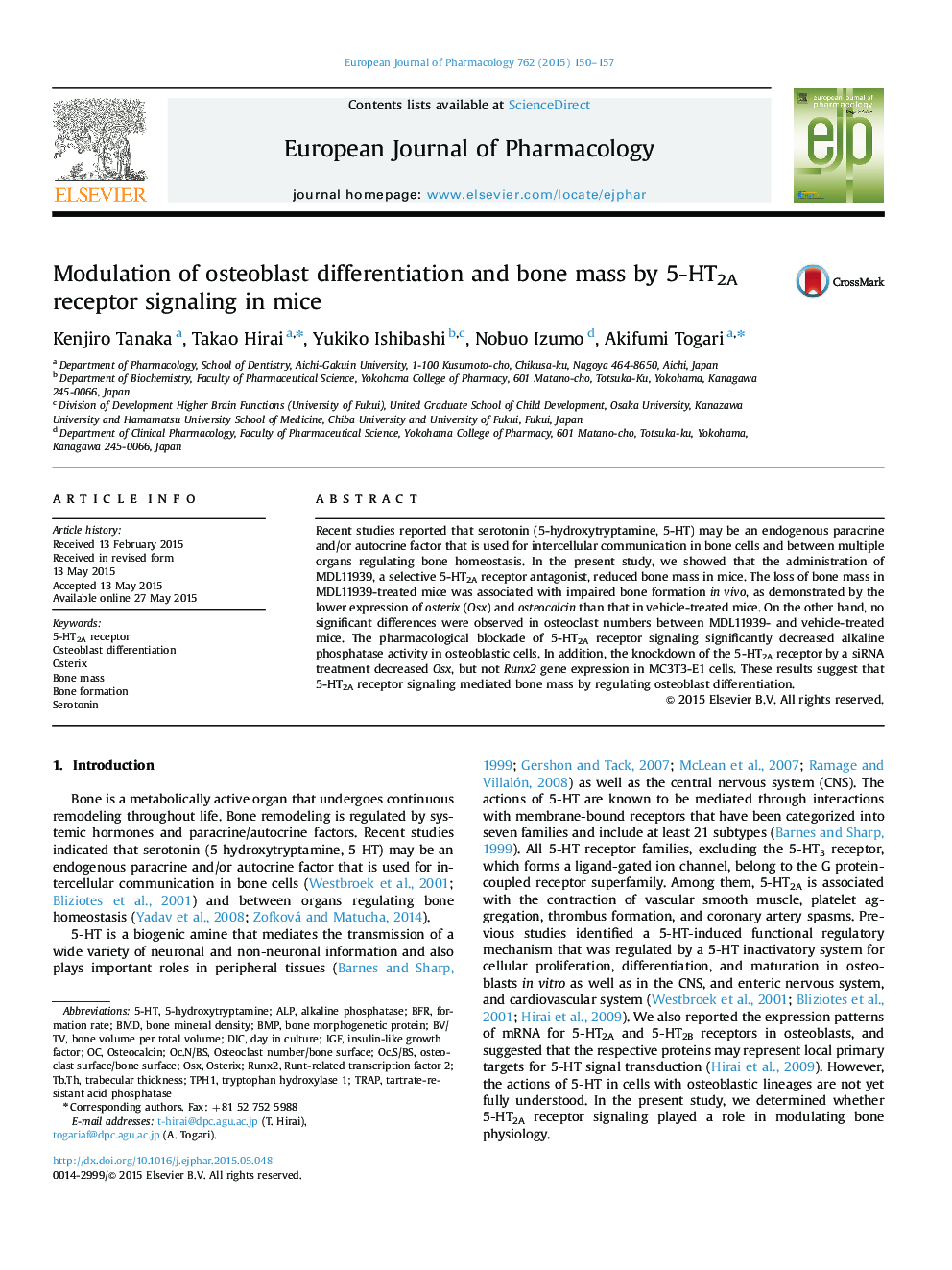| Article ID | Journal | Published Year | Pages | File Type |
|---|---|---|---|---|
| 5827248 | European Journal of Pharmacology | 2015 | 8 Pages |
Abstract
Recent studies reported that serotonin (5-hydroxytryptamine, 5-HT) may be an endogenous paracrine and/or autocrine factor that is used for intercellular communication in bone cells and between multiple organs regulating bone homeostasis. In the present study, we showed that the administration of MDL11939, a selective 5-HT2A receptor antagonist, reduced bone mass in mice. The loss of bone mass in MDL11939-treated mice was associated with impaired bone formation in vivo, as demonstrated by the lower expression of osterix (Osx) and osteocalcin than that in vehicle-treated mice. On the other hand, no significant differences were observed in osteoclast numbers between MDL11939- and vehicle-treated mice. The pharmacological blockade of 5-HT2A receptor signaling significantly decreased alkaline phosphatase activity in osteoblastic cells. In addition, the knockdown of the 5-HT2A receptor by a siRNA treatment decreased Osx, but not Runx2 gene expression in MC3T3-E1 cells. These results suggest that 5-HT2A receptor signaling mediated bone mass by regulating osteoblast differentiation.
Keywords
Related Topics
Life Sciences
Neuroscience
Cellular and Molecular Neuroscience
Authors
Kenjiro Tanaka, Takao Hirai, Yukiko Ishibashi, Nobuo Izumo, Akifumi Togari,
